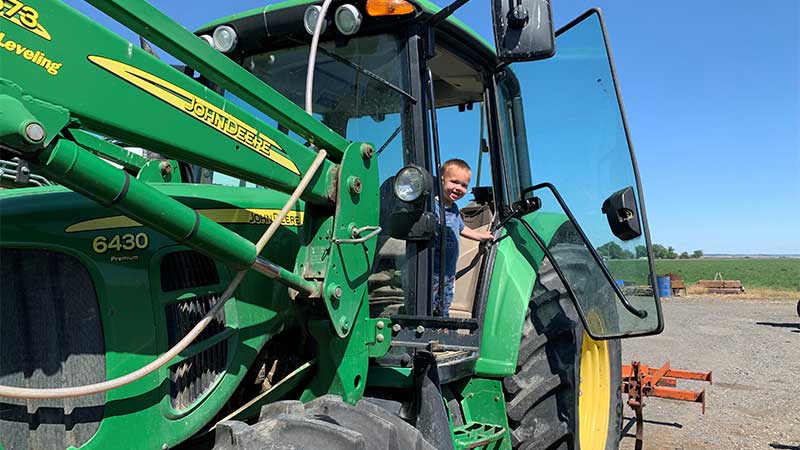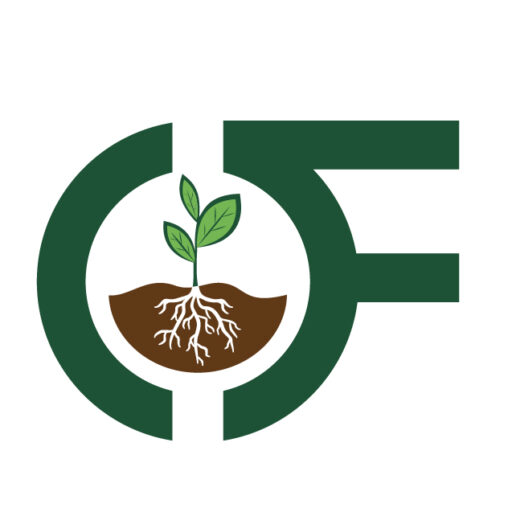Why Locally Sourced Bale of Hay is Best for Your Livestock: Insights from Ohana Hay
Welcome to Ohana Farms, your hay sources for high-quality hay products in the Tri-Cities area. We specialize in providing premium hay for pet owners, farmers, and livestock enthusiasts. Our commitment to quality, sustainability, and community involvement ensures that your animals receive the best possible feed. We’ll explore why locally sourced hay is the best choice for your livestock, highlighting the benefits of choosing local suppliers and how Ohana Farms contributes to the Pasco community.

(Kids riding tractor at Ohana Hay fields)
The Importance of Locally Sourced Grass/ Alfalfa Hay Mix Bale
Choosing locally sourced grass/alfalfa hay mix bales offers numerous benefits that extend beyond just the quality of the hay. It plays a vital role in supporting the local economy, promoting sustainable agricultural practices, and ensuring the health and well-being of your animals.
Nutritional Benefits
A grass/alfalfa hay mix provides a balanced diet for your livestock, combining the high fiber content of grass hay with the rich protein and calcium found in alfalfa. This blend ensures that your animals receive a diverse range of nutrients essential for growth, maintenance, and overall health. Locally sourced hay maintains its nutritional integrity because it doesn’t endure long transportation times that can degrade its quality.
Enhanced Digestibility
The mix of grass and alfalfa hay offers enhanced digestibility for your animals. Grass hay provides the necessary roughage to aid in digestion, while alfalfa adds a higher nutrient density. This combination supports healthy digestion and helps prevent issues such as colic and other gastrointestinal problems, ensuring that your livestock remains healthy and productive.
Freshness and Nutritional Integrity
One of the primary advantages of opting for local hay suppliers is the assurance of quality. At Ohana Farms, we take pride in cultivating and harvesting high-quality hay, ensuring that each bale meets the nutritional needs of your animals. By sourcing locally, you can trust that our hay is fresh, free from contaminants, and carefully processed to maintain its nutritional value.
Just like the benefits of eating local food for humans, choosing local hay for your animals ensures they receive fresher and healthier produce. By minimizing the time between harvest and consumption, locally sourced hay maintains its nutritional integrity, promoting optimal health and performance for your beloved pets or livestock.
Assessing Hay Quality
Once you’ve determined the type of hay that best suits your livestock’s needs, it’s crucial to assess hay quality. Quality hay ensures your animals receive the necessary nutrients in hay for live a long healthy life. Here are some factors to consider when evaluating hay quality:
- Color: High-quality hay should have a greenish color, indicating that it was harvested at the optimal stage of maturity. Avoid hay that is brown or yellow, as it may have lost nutritional value.
- Texture: The texture of hay should be soft, pliable, and free from excessive stems or coarse material. Coarse hay can be difficult for animals to digest and may have lower nutritional value.
- Smell: Good-quality hay should have a fresh, sweet, and grassy smell. Hay that smells musty, moldy, or overly fermented should be avoided, as it may be harmful to livestock.
- Leafiness: Leafy hay is generally higher in nutritional value than stemmy hay. Look for hay with a higher proportion of leaves and fewer stems.
- Lack of Dust and Mold: Inspect the hay for dust and mold. Dusty or moldy hay can be harmful to animals and should never be fed.
- Nutrient Content: Consider having the hay tested for its nutrient content, including protein, fiber, and mineral levels. This can provide valuable information to help you balance your livestock’s diet effectively.
Environmental Benefits
Sustainability is at the heart of our farming practices. We employ environmentally friendly methods to cultivate and harvest our hay, including crop rotation, minimal use of chemical fertilizers, and integrated pest management. By adopting sustainable practices, we not only produce high-quality hay but also contribute to the long-term health of the environment.
Reduced Carbon Footprint
Supporting local hay suppliers like Ohana Farms has numerous environmental advantages. Local hay reduces the carbon footprint associated with transportation, as it doesn’t have to travel long distances to reach your farm. This reduction in fuel consumption and emissions helps to minimize the environmental impact and supports a more sustainable agricultural system.
Supporting the Local Economy
Economic Growth
When you choose to shop local, you’re investing in the success of your community. Local businesses like Ohana Farms contribute to the economic growth of the Pasco area by creating jobs, generating revenue, and fostering a vibrant marketplace. By supporting us, you’re not just purchasing hay—you’re investing in the livelihoods of your neighbors and helping to sustain the local economy.
Community Engagement
Beyond the transactional aspect, choosing local hay suppliers fosters a sense of community and belonging. At Ohana Farms, we value the relationships we’ve built with our customers over the years, and we’re committed to being active participants in the Pasco community. From sponsoring local events to volunteering our time and resources, we strive to make a positive impact beyond our business operations. When you support us, you’re not just a customer—you’re part of the Ohana family.
The Hay Production Process at Ohana Farms
Our hay production process is meticulously designed to ensure the highest quality product from start to finish. Let’s take a closer look at each stage of this journey.
1. Soil Preparation and Planting
The journey of quality hay production begins with soil preparation. At Ohana Farms, we use sustainable farming practices to enrich the soil, promoting healthy plant growth. This involves testing the soil to determine its nutrient content and adding organic matter to improve its structure and fertility.
Once the soil is prepared, we plant high-quality hay seeds that are well-suited to the local climate and soil conditions. By selecting the right varieties, we ensure that our hay is nutrient-rich and resilient.
2. Growth and Monitoring
During the growing season, our team closely monitors the hay fields to ensure optimal growth. This involves regular inspections for pests, diseases, and nutrient deficiencies. By addressing any issues promptly, we can maintain the health and vigor of the hay crop. Water management is another critical aspect of hay production. We use efficient irrigation systems to provide the necessary moisture without wasting resources.
3. Harvesting: Timing is Everything
The timing of the harvest is crucial for producing high-quality hay. We monitor the growth stages of the hay plants to determine the optimal time for cutting. Harvesting hay too early or too late can affect the nutritional content and palatability of the hay. At Ohana Farms, we aim to harvest at the peak of nutritional value to ensure your animals get the best possible feed.
Once the hay is cut, it needs to dry properly to prevent mold and spoilage. We use modern equipment to turn and dry the hay evenly, ensuring it retains its nutritional quality. This process requires skill and experience, and our team is dedicated to achieving the perfect balance between moisture content and dryness.
4. Baling and Storage
After the hay has dried to the appropriate level, it is baled using advanced machinery that compresses the hay into manageable sizes. Proper baling is essential for maintaining the quality of the hay during storage and transportation. Our bales are tightly packed to protect against moisture and contamination, ensuring that the hay remains fresh and nutritious.
Storage is another critical component of our process. We store the bales in well-ventilated, dry environments to prevent mold growth and preserve their quality. Our storage facilities are designed to protect the hay from the elements, ensuring that it remains in top condition until it reaches your animals.
5. Delivery: From Our Fields to Your Feeders
The journey from field to feeder doesn’t end at our storage facilities. We take great care in delivering our hay to you in the best possible condition. Our logistics team ensures that the hay is transported efficiently and safely, minimizing handling to prevent damage to the bales. By maintaining control over the entire process, from cultivation to delivery, we guarantee that you receive the highest quality hay for your animals.
Enhancing Animal Welfare
Health and Well-Being
At Ohana Farms, we prioritize the health and well-being of your animals. Our high-quality, nutrient-rich hay supports optimal health, digestion, and performance for your livestock. By choosing locally sourced hay, you are providing your animals with fresh, nutritious feed that promotes their overall well-being.
Reducing Stress
Fresh, high-quality hay can also reduce stress for your animals. When animals receive consistent, nutritious feed, they are less likely to experience digestive issues and other health problems. This consistency helps create a stable and stress-free environment for your livestock, contributing to their overall happiness and productivity.
Conclusion
In conclusion, locally sourced hay from Ohana Farms offers numerous benefits for your livestock, the environment, and the local community. By choosing local, you are ensuring the highest quality feed for your animals, supporting sustainable farming practices, and contributing to the economic growth of the Pasco area. Experience the Ohana Farms difference and see why we are the preferred choice for high-quality hay in the Tri-Cities area. Thank you for trusting us to provide the best for your animals and being a part of our journey towards sustainability and community well-being.

